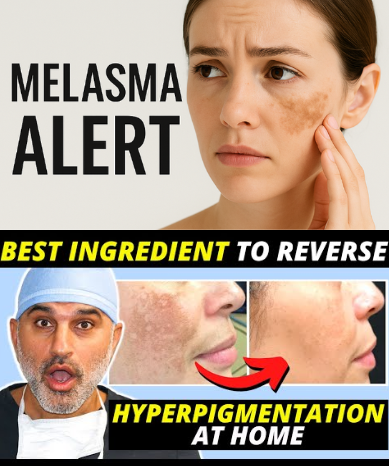
Melasma is one of those frustrating skin conditions that seems to linger no matter how carefully you follow your skincare routine. You may be consistent with serums, moisturizers, and treatments—but if you skip a single, vital step, all your efforts could be undone. That step? Sunscreen.
Let’s break down why this one product can make or break your journey with melasma, how it works to protect your skin, and what to look for when choosing the right sunscreen.
Why Sunscreen Is the Key to Controlling Melasma
Melasma forms when melanocytes—the pigment-producing cells in your skin—go into overdrive, often triggered by UV radiation. Too much sun exposure leads to an excess of melanin, creating those stubborn dark patches across your cheeks, forehead, or upper lip.
It doesn’t stop there. The sun also aggravates existing hyperpigmentation caused by acne scars or inflammation. In short, sunlight fuels melasma. The most effective way to break this cycle is to create a shield between your skin and UV rays—and that’s exactly what sunscreen does.
By blocking or reflecting harmful rays, sunscreen reduces melanin overproduction, prevents new patches, and helps stabilize your skin after treatments. Without it, every step in your skincare routine becomes less effective.
What to Look for in Sunscreen for Melasma-Prone Skin
Not all sunscreens are created equal. If you want to keep hyperpigmentation at bay, pay close attention to these factors before picking a bottle:
Broad Spectrum Protection
Both UVA and UVB rays damage skin, but they affect it differently. UVA rays penetrate deeper, causing premature aging and melasma, while UVB rays cause burns and surface damage. A broad-spectrum sunscreen blocks both, giving you complete protection.
Always scan the label for “Broad Spectrum” or “UVA/UVB protection.” This ensures your skin is safe from sunburn, relapses of melasma, and long-term skin aging.
SPF Matters—Go Higher Than 30
SPF (Sun Protection Factor) measures how well sunscreen defends against UVB rays. SPF 15 blocks 93% of UVB radiation, SPF 30 blocks 97%, and SPF 50 blocks around 98%. For melasma, dermatologists recommend SPF 30 or higher. The higher the SPF, the better your shield against hyperpigmentation flare-ups.
Video : BEST At Home Solution (that works!) to Manage Hyperpigmentation and Melasma
Sunscreen Filters—Chemical vs. Physical
Sunscreens use two types of filters:
- Chemical filters (like avobenzone, octocrylene) absorb UV rays and transform them before they harm the skin.
- Physical filters (like zinc oxide, titanium dioxide) reflect and scatter UV rays away from the skin.
Both work well, but physical sunscreens are often preferred for sensitive or melasma-prone skin because they’re gentler and provide instant protection.
Check the PA Rating
Developed in Japan, the PA system tells you how much UVA protection a sunscreen provides. More plus signs mean stronger protection:
- PA+ = some UVA protection
- PA++ = moderate protection
- PA+++ = high protection
- PA++++ = extremely high protection
When battling melasma, always go for PA+++ or PA++++ for maximum defense.
Water Resistance for Long-Lasting Protection
If you’re outdoors, exercising, or even just prone to sweating, water-resistant sunscreen is your best friend. These formulas cling to your skin for 40–80 minutes, ensuring you stay protected. Just remember—water-resistant is not waterproof, so reapply every two hours.
Non-Comedogenic Formulas
The last thing melasma-prone skin needs is clogged pores and breakouts. Choose sunscreens labeled “non-comedogenic” to keep your pores clear and your skin breathing. Breakouts lead to inflammation, and inflammation can cause more pigmentation.
Ingredients to Avoid
Some chemicals can do more harm than good. Steer clear of sunscreens with parabens, PABA, or oxybenzone, as they can trigger irritation and allergic reactions. Instead, stick to gentle, dermatologist-tested options. And of course, always select a formula tailored to your skin type—gel-based for oily skin, hydrating creams for dry skin, or lightweight fluids for combination skin.
Video : How to treat dark spots and hyperpigmentation
The Takeaway: Sunscreen Is Non-Negotiable for Melasma
If you’re serious about managing melasma, sunscreen isn’t optional—it’s essential. Consistent use protects against flare-ups, slows melanin production, and even minimizes the appearance of old spots.
Think of it as insurance for your skincare investments. Whether you’re using brightening serums, chemical peels, or prescription treatments, none of it will last without daily sun protection. And don’t be fooled by cloudy weather or indoor days—blue light from your screens can also worsen pigmentation.
The bottom line? If you want healthier, more even-toned skin, sunscreen is your first line of defense. Apply it every morning, reapply throughout the day, and make it a ritual you never skip. Your skin will thank you years from now.


